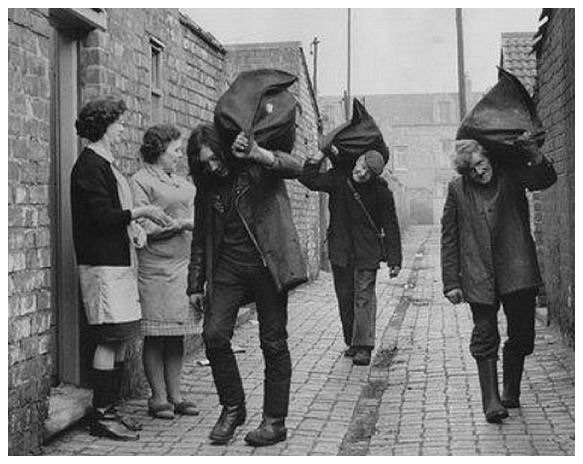- Home
- Local History
- Door to Door: History of Delivery Service
Door to Door: History
Written by Pam Preedy.
As I sit in my front bedroom study, looking for inspiration for my next article, I watch a variety of vans and cars driving up our little close, drivers checking for the address for their next delivery. Oddly enough, it hadn’t occurred to me that families are still taking delivery of a variety of items. Deliveries in the 21st century are different from those in previous centuries. When we look back over time and delve a bit deeper, we realise that these changes coincide with social and technological advances.
For us in the 21st century, technology has been the driving force for change. Those of us born in the middle of teh 20th century have seen the death of the coalman keeping out coals holes filled for warmth and for some, cooking. The miilkman has almost, but not quite, disappeared from our streets. Postal workers and newspaper boys are disappearing. Instead of up to 12 postal deliveries a day in the 19th century, today we might see the postman maybe once a day or every other day. I see the newspaper boys delivering to one or two homes in our street each day.

When I was a newspaper girl in the late 1950s we used our bikes and expected to deliver papers to several homes on each road. We must have been stronger then because at the weekend, publishers added magazines to their newspapers. We still managed to get them to the customers.
How much longer can newspapers and the deliveries last? As people switch to the internet, smart phones and television for their news, fewer people buy newspapers, removing the need for the newspaper delivery boy. But it is not only advances in technology that has created the decline of deliveries, but also growing concerns for the safety of the boys and girls so employed and the establishment of a free paper.
Open All Hours (a BBC sitcom set in a small grocer’s shop in Yorkshire) provides a glimpse into the ubiquitous Corner Shop in which David Jason as Granville made the deliveries on his bicycle. It broadcast between 1976 and 1985. Food shopping has gone through its own metamorphosis into the large self-service stores, where the majority of shoppers buy their groceries. In spite of all the changes, it seems the Corner Shop has survived, and it is estimated that there are in the region of 50,000 convenience stores still thriving.
As the size of the stores grew, they began to deliver their goods. The Croydon Sainsbury’s branch introduced deliveries in 1882 and, from 1999, began online groceries. Ocado started in 2000 for Waitrose, while Amazon Prime in 2005. Today Deliveroo works with around 182,000 restaurants, grocers and retailers.

My husband remembers the Corona delivery lorry bringing bottles of Tizer to his home. Its original name was ‘Pickup’s Appertizer’ and was often advertised as “It’s a red thing.” It was invented by Fred and Tom Pickup and launched in 1924. The original recipe included lots of additives and E numbers. When they changed the recipe to eliminate the additives, there were complaints, such as “DON’T DRINK IT! It tastes of fruit now and ruined my childhood memories of fizzy chemicals. Ecologically sound, the red drink came in a bottle and the empties taken away.”
In the first half of the 20th century, several entrepreneurial shopkeepers, bakers, butchers and grocers would deliver their goods to homes in the local area. According to my aunt (aged 101), children could go to the local shop with a bowl to collect Walls ice-cream.
Another delivery came in the form of the laundry. In Bromley, one of the most successful laundries was started by Henry Podger – you can read more about him here >
Originally published in Life in Bromley magazine (Issue 37, March 2025)
